DVD review: The Scarlet Worm (2011)
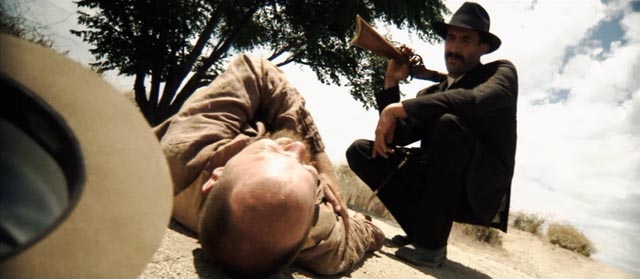
In the American southwest of 1909, an enforcer named Print (Aaron Stielstra) who works for a rancher named Mr. Paul (Montgomery Ford) justifies his work by transforming each killing into a kind of artistic statement. He likes to lecture his victims on the finer points of the meaning of life before finishing them off, then turning the scene into a kind of art installation as a sign to others, a clue to the mysteries which underlie existence.
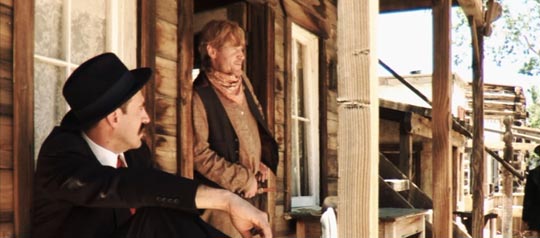
In The Scarlet Worm (2011), having just killed a rustler and stuffed his body into a dead cow as if it had died in the act of giving birth to the man, Print is called to a meeting with his boss and given a new assignment. It seems that there’s a brothel run by a man named Kley (Dan van Husen), where the whores are routinely subjected to abortions to keep them available for work. Mr. Paul expresses moral and religious objections to this practice and wants Print to execute Kley. This set-up is pretty original, and ambitious for a very low budget movie made by a group of friends, film historians and enthusiasts who originally came together over the Internet. David Lambert’s script offers a meditation on the meaning of taking lives, unborn and otherwise, in a society rooted in violence.
The western, of course, is one of the most flexible genres, capable of containing virtually every other genre from comedy to musical to horror to psychological study, crime story, social issues tract and tragedy. It can encompass realism, surrealism, myth and the deconstruction of myth. The central core of the genre is the individual poised between the encroachment of civilized “restrictions” and the unfettered “savagery” of the Other in the wilderness, a character who forges his own morality, with heroes and villains equally celebrated because they have the power to self-define their place in the world.
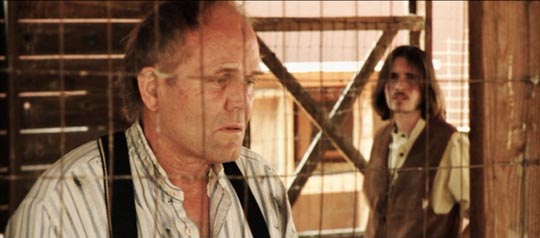
It’s a genre with a rich history which includes the (sometimes tedious) mythologizing of John Ford, the psychological intricacies of Anthony Mann, the subtlety of Budd Boetticher. But by the ’60s, the western was in decline, partly because times had changed and rugged individualism was becoming less socially tenable. The frontier was gone and American culture was increasingly focused on urban existence, the western increasingly subsumed by the cop story (Don Siegel’s Dirty Harry [1971] is essentially an urban western, one which clearly shows the difficulty of maintaining the old archetypes in this new world).
By the late ’60s, the genre was given a blood-soaked epitaph by Sam Peckinpah in The Wild Bunch (1969). The western almost disappeared, apart from an occasional revisionist effort like Arthur Penn’s The Missouri Breaks (1976), Frank Perry’s Doc (1971), Peckinpah’s own elegiac Pat Garrett and Billy the Kid (1973). Of course, the gap was filled for a while by the foreign westerns of Sergio Leone and other European filmmakers, but these movies, set in a more overtly fantasy time and place, revelled in a kind of amorality which was alien to the traditional American western.
Late examples of the genre like Clint Eastwood’s Unforgiven (1992) and Jim Jarmusch’s Dead Man (1995) deal directly with the western myth and its grounding in historical reality, deconstructing and reassembling the form in ways which re-examine the kind of national identity which grew out of both the history and the myths of the West. While The Scarlet Worm doesn’t attain that level of sophistication, it is an intriguing attempt at revisionism. As in Unforgiven, violence towards women, who are not seen as full and equal members of this society, paradoxically drives the action. When late in the film we discover that Mr. Paul’s anti-abortion stand is really just a moralistic cover for other motives, we learn that he’s just deflecting attention from his own brutality towards women.
Kley offers a bleak, religion-inflected, justification for what he does. The service he provides with his whorehouse helps to prevent explosions of violence and rape which would otherwise tear society apart. The aborted foetuses are innocents sacrificed for the sake of continued peace. But at the same time he refers to the Nephilim, offspring of humans (the whores) and demons (the vile customers at his establishment), creatures which should not be suffered to live. As with Mr. Paul’s motives, Kley’s excuses seem ultimately concocted merely to justify what he’s already intent on doing, the exploitation of the women for his own profit.
While the script falters at times, what really distinguishes The Scarlet Worm are the visual skills of director Michael Fredianelli and cinematographer Michael A. Martinez, and some subtle character touches provided by Lambert. Despite budgetary limitations (very sparse, unfinished sets), the camerawork and editing are skillful and evocative, although being shot on digital video there are contrast issues which make much of the photography overly bright, with blown-out backgrounds which flatten some of the impact of the dynamic framing.
For a movie like this, though, one of the biggest assets is the casting. All too often with low-budget projects, particularly ones with a period setting, things are let down by weak performances and actors who don’t visually fit into the movie’s world. That isn’t the case here. Fredianelli and his producers have found terrific faces which provide a sense of authenticity beyond the means of the limited budget. But it’s not just the look; the talent is impressive too.
Aaron Stielstra (who also wrote the effective score) has genuine gravitas as Print, and he’s well supported by Kevin Griffin as Hank, his now-retired mentor. The scenes between these two are some of the film’s most effective, quiet, relaxed conversations about the brutal work they once shared. In supporting roles, the stand-outs are Montgomery Ford (aka Brett Halsey) as Mr. Paul and Dan van Husen as Kley. Both are veterans with rich and varied careers, including spaghetti westerns, and they bring a wealth of experience to their roles.
The Scarlet Worm should offer inspiration to other movie enthusiasts, showing what can be done with limited resources and dedication; but it’s also a valuable lesson in what the essential foundations are – a well-written script, a good eye for pertinent imagery, and a cast which combines real acting talent with a look that’s appropriate to the film’s world.
Unearthed Films’ DVD edition of the movie (also available on Blu-ray) offers a sharp, though as previously mentioned slightly blown-out image. There’s a very brief “making of” featurette which seems more like an over-edited promo piece, plus two commentary tracks. I sampled both, but didn’t listen all the way through either. The first, featuring writer David Lambert and members of the cast, is one of those irritating group efforts where the participants seem more interested in amusing each other than in giving information to the viewer, although Lambert does provide some details about the historical background to elements of the script, with Print incorporating aspects of several real-life gunmen from the period. On the second track, associate producers Mike Malloy and Eric Zaldivar seem uncomfortable in front of the mic, though both (like most of the behind-the-camera personnel) also appear in the film in supporting roles; however, they do fill in some of the background about how a group of film fans came together as Wild Dogs Productions to make this ambitious movie.
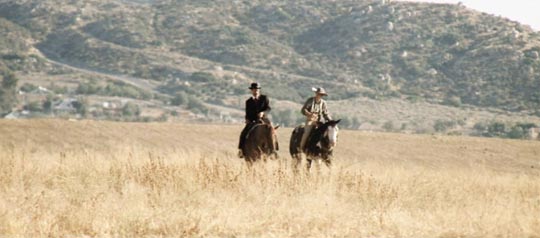
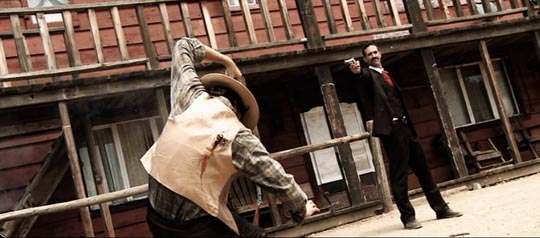
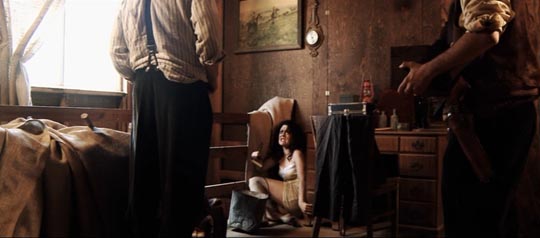
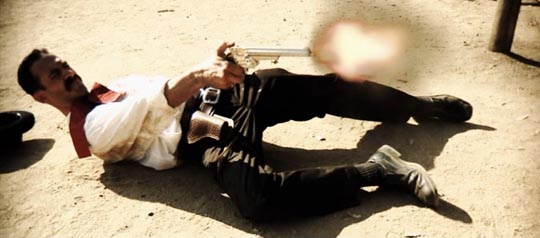
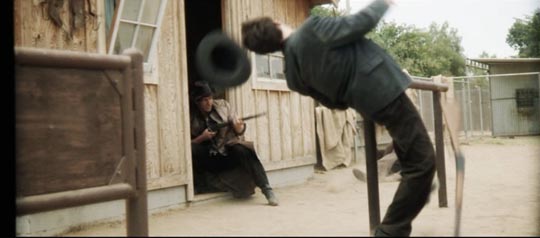
Comments